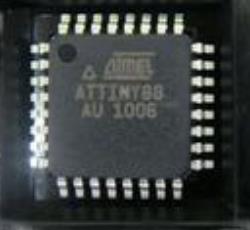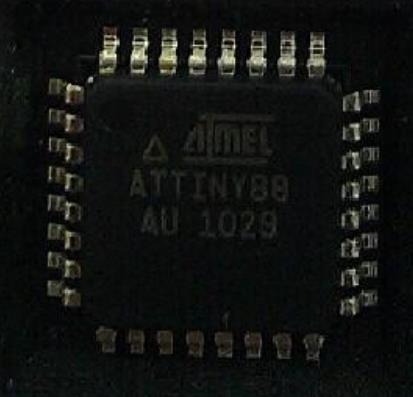android studio开发视频教程
价格:0.00起
深圳市天吉芯技术开发有限公司
联系人:郑主管
电话:13265447518
地址:广东省深圳市龙华区大浪三合科创园408
产品规格:
产品数量:
包装说明:
关 键 词:android,studio开发视频教程
行 业:电子 电子产品设计
发布时间:2021-04-26
ATtiny88 Automotive 8-bit AVR Microcontroller with 8K Bytes In-System Programmable Flash DATASHEET Features High performance, low power AVR 8-Bit microcontroller Advanced RISC architecture 123 powerful instructions most single clock cycle e...
ThePC7 and PC[5:0] output buffers have symmetrical drive characteristics with both sink and sourcecapability. As inputs, Port C pins that are externally pulled low will source current if the pull-upresistors are activated. The Port C pins are tri-stated when a reset condition becomes active,even if the clock is not running.1.1.7PC6/RESETIf the RSTDISBL Fuse is programmed,

ThePD[7:4] output buffers have symmetrical drive characteristics with both sink and source capabil-ities, while the PD[3:0] output buffers have high sink capabilities. As inputs, Port D pins that areexternally pulled low will source current if the pull-up resistors are activated. The Port D pins aretri-stated when a reset condition becomes active, even if the clock is not running.The various special features of Port D are elaborated in “Alternate Functions of Port D” on page75.

PC6 is used as an I/O pin. Note that the electrical char-acteristics of PC6 differ from those of the other pins of Port C.If the RSTDISBL Fuse is unprogrammed, PC6 is used as a reset input. A low level on this pin forlonger than the minimum pulse width will generate a reset, even if the clock is not running. The

All other I/O pins take their supply voltage from VCC.1.1.3GNDGround.1.1.4Port A (PA3:0)Port A is a 4-bit bi-directional I/O port with internal pull-up resistors (selected for each bit). ThePA[3:0] output buffers have symmetrical drive characteristics with both sink and source capabil-ity.
The ATtiny48/88 is a low-power CMOS 8-bit microcontroller based on the AVR enhanced RISCarchitecture. By executing powerful instructions in a single clock cycle, the ATtiny48/88 achievesthroughputs approaching 1 MIPS per MHz allowing the system designer to optimize power con-sumption versus processing speed.








